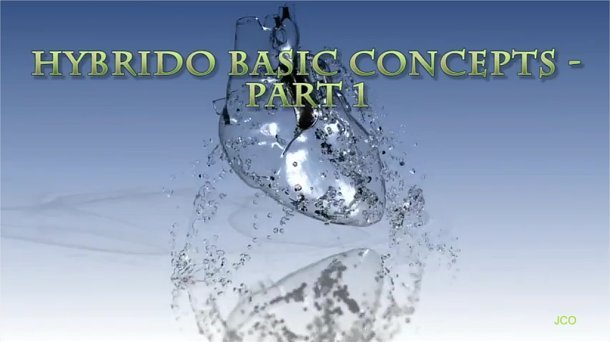

Realflow tutorials how to#
We cover some tips on how to handle this later in the tutorial. Our dspline is made of 7 CV points and they matched our ‘guide shape’ that we made in 3ds max. The Dspline is extremely powerful, but can be very clunky to control and setup. 1 and then proceeded to set up our Dspline. We did a few tests at different scene scales before we settled on. If the scene scale is incorrect, a tiny cup of water will start behaving like a massive lake, for example. The scale settings in RealFlow are really important and will obviously strongly dictate the ‘look’ and behavior of the fluid and the forces that are applied to it – such as Gravity.

1 was a geometry scale that worked really well with the fluid and force settings in RealFlow. For an accurate scale, we should have set our global scale to. In 3ds Max, we generally work to 1 grid square = 1 cm. RealFlow’s default unit is 1 grid square = 1 metre. For this sequence, we set the Geometry scale to. After importing the SD, our first step was to change our global scale. The next part of our tutorial focuses on our RealFlow scene used for this sequence. Part 03 – Basic Overview of scene – Realflow With the scene layout, timing and animation set we then sent all these objects to realflow as an SD file using the 3ds Max-Realflow connectivity plugin. The vertices of the 3ds max spline would become the rough location where we should put the CV points of the D-spline once we were in RealFlow. We used the 3DS Max 2D pan and zoom tool to ensure the main body of water would pass through as many key ‘sun ray’ geometries as possible in order to create a real splash! The spline shape was also extremely important to use as a guide for where to place our D-Spline in realflow. When approaching the ‘magic’ flowing water simulation, we first made a rough basic spline shape to plan out where we wanted our magic water to ‘flow’. This allowed us to easily visualise the trajectory of the magic water through our ultra-wide camera view. max scene with State Sets/Vray and created the face/sun transition in After Effects. We used state sets to switch between the two, changing layer properties, materials, lights and render settings each time. The scene included both the “head and tears” as well as the “Sun + water” animations. It was very important to keep this in mind when trying to layout and plan the scene and it’s animation. we had to accommodate an extremely wide aspect ratio of 20 by 3. Our first step was to layout the camera, objects and animation. If after watching the video you would like any further information on anything, do get in touch and let us know! Part 02 – Basic Overview of the scene – 3ds maxįirstly, we give a look at our scene in 3ds max. We do cover the D-Spline in-depth however.

We don’t give a step-by-step walk-through of every button we pressed – rather, we want to breakdown the workflow we used. This tutorial video focuses on how we achieved the magic flowing water effect in RealFlow using the D-spline daemon. The Animation has been designed for a large 12 m x 1.8 m wraparound screen and is displayed using 5 video projectors. The Incas believed Gold to be the “tears of the sun” the Egyptian “rays of the sun.” The tutorial video focuses on just one of the sequences from the animation. This sequence is from the beginning of the animation, about the origin of Gold. The project is called ‘the wonder of Gold’ – The animation followed the story of Gold throughout history. Reel Pictures animation studio (Melbourne Australia) has recently used RealFlow extensively in a 10 minute 3D animation for a permanent installation at the Perth Mint in Australia. Part 01 – Introduction & Project overview Please contact Reel Pictures if you would like to use this tutorial content in your website or blog.
Realflow tutorials free#
You are free to link directly to this page, but are not entitled to copy/modify this content without prior written consent. Please note:This tutorial is Copyright © Reel Pictures P/L. The first part of the video is an overview of one of the sequences in the animation and a look at our workflow. The second part of this video is a tutorial focused on the RealFlow Dspline deamon and how we used it at Reel Pictures, Melbourne to direct our fluid simulation in one of the animated sequences.īelow, we’ve prepared a text version of our video tutorial above. The project is called The Wonder Of Gold – a 10 minute 3D animated film displayed on a 12 metre x 1.8 metre wrap-around screen in one of the Perth Mint’s new exhibits. We’ve put together a video overview of a 3D animation we worked on for a permanent installation at the Perth Mint in Western Australia.


 0 kommentar(er)
0 kommentar(er)
